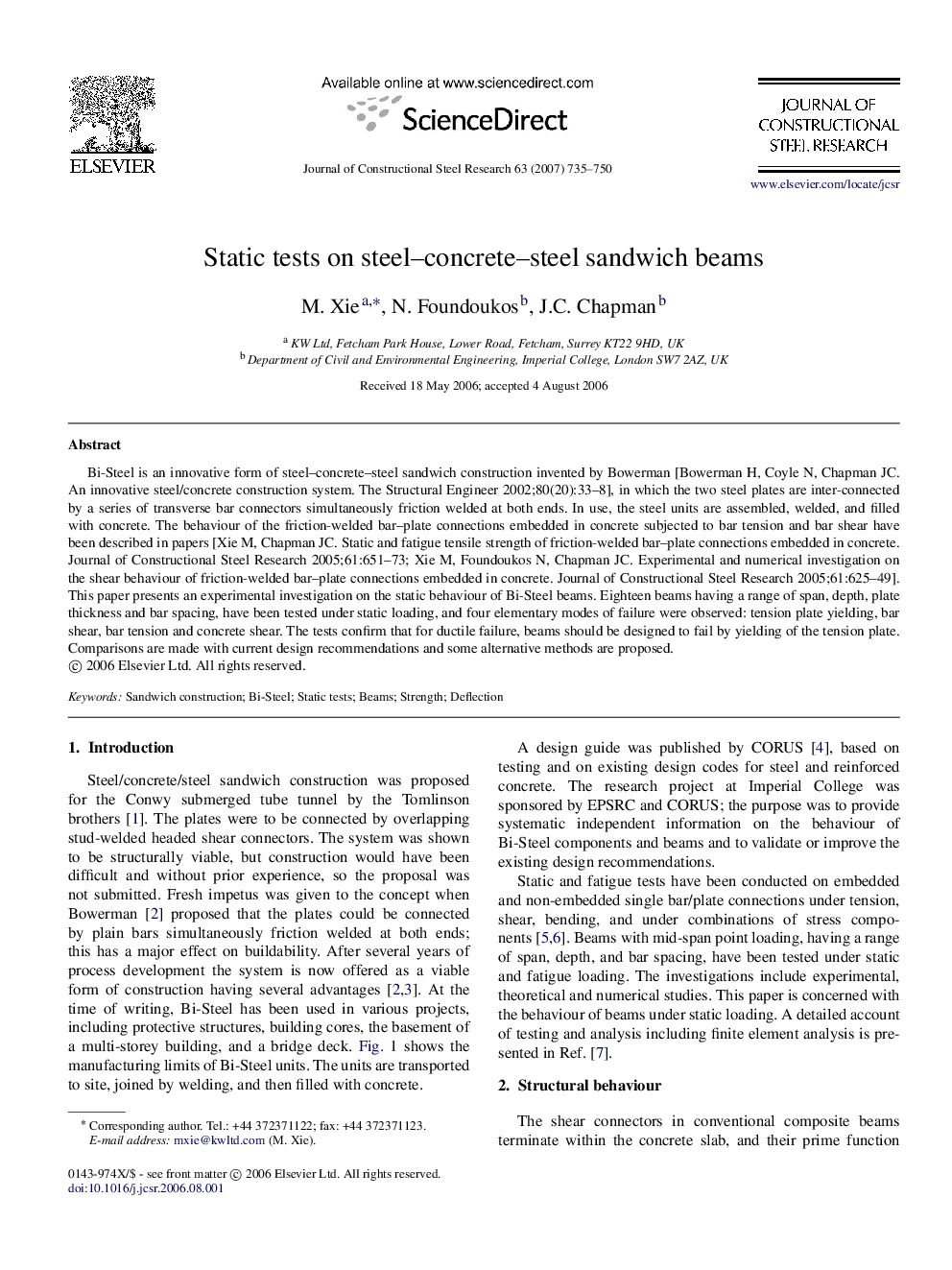| Article ID | Journal | Published Year | Pages | File Type |
|---|---|---|---|---|
| 286073 | Journal of Constructional Steel Research | 2007 | 16 Pages |
Bi-Steel is an innovative form of steel–concrete–steel sandwich construction invented by Bowerman [Bowerman H, Coyle N, Chapman JC. An innovative steel/concrete construction system. The Structural Engineer 2002;80(20):33–8], in which the two steel plates are inter-connected by a series of transverse bar connectors simultaneously friction welded at both ends. In use, the steel units are assembled, welded, and filled with concrete. The behaviour of the friction-welded bar–plate connections embedded in concrete subjected to bar tension and bar shear have been described in papers [Xie M, Chapman JC. Static and fatigue tensile strength of friction-welded bar–plate connections embedded in concrete. Journal of Constructional Steel Research 2005;61:651–73; Xie M, Foundoukos N, Chapman JC. Experimental and numerical investigation on the shear behaviour of friction-welded bar–plate connections embedded in concrete. Journal of Constructional Steel Research 2005;61:625–49]. This paper presents an experimental investigation on the static behaviour of Bi-Steel beams. Eighteen beams having a range of span, depth, plate thickness and bar spacing, have been tested under static loading, and four elementary modes of failure were observed: tension plate yielding, bar shear, bar tension and concrete shear. The tests confirm that for ductile failure, beams should be designed to fail by yielding of the tension plate. Comparisons are made with current design recommendations and some alternative methods are proposed.
